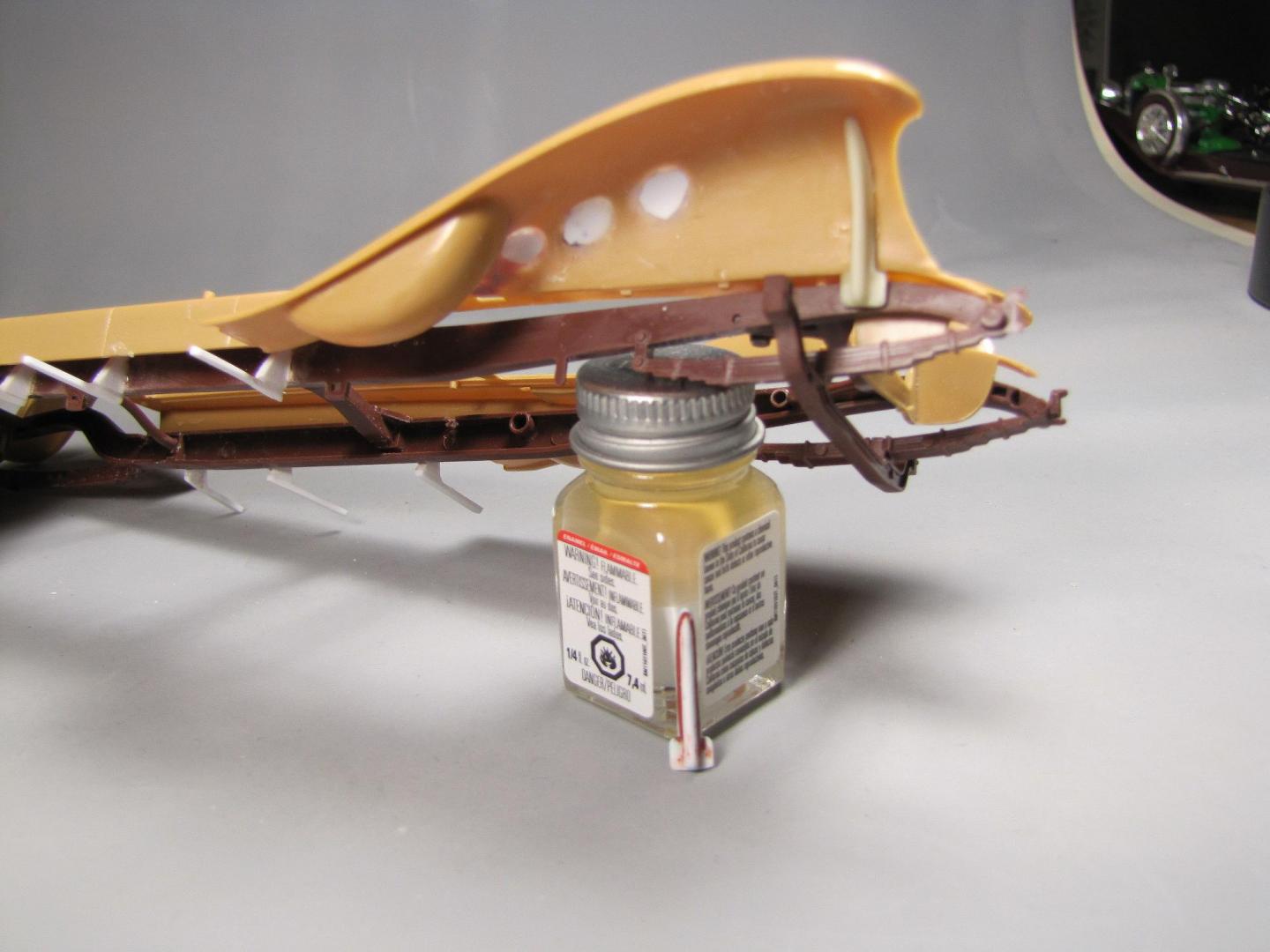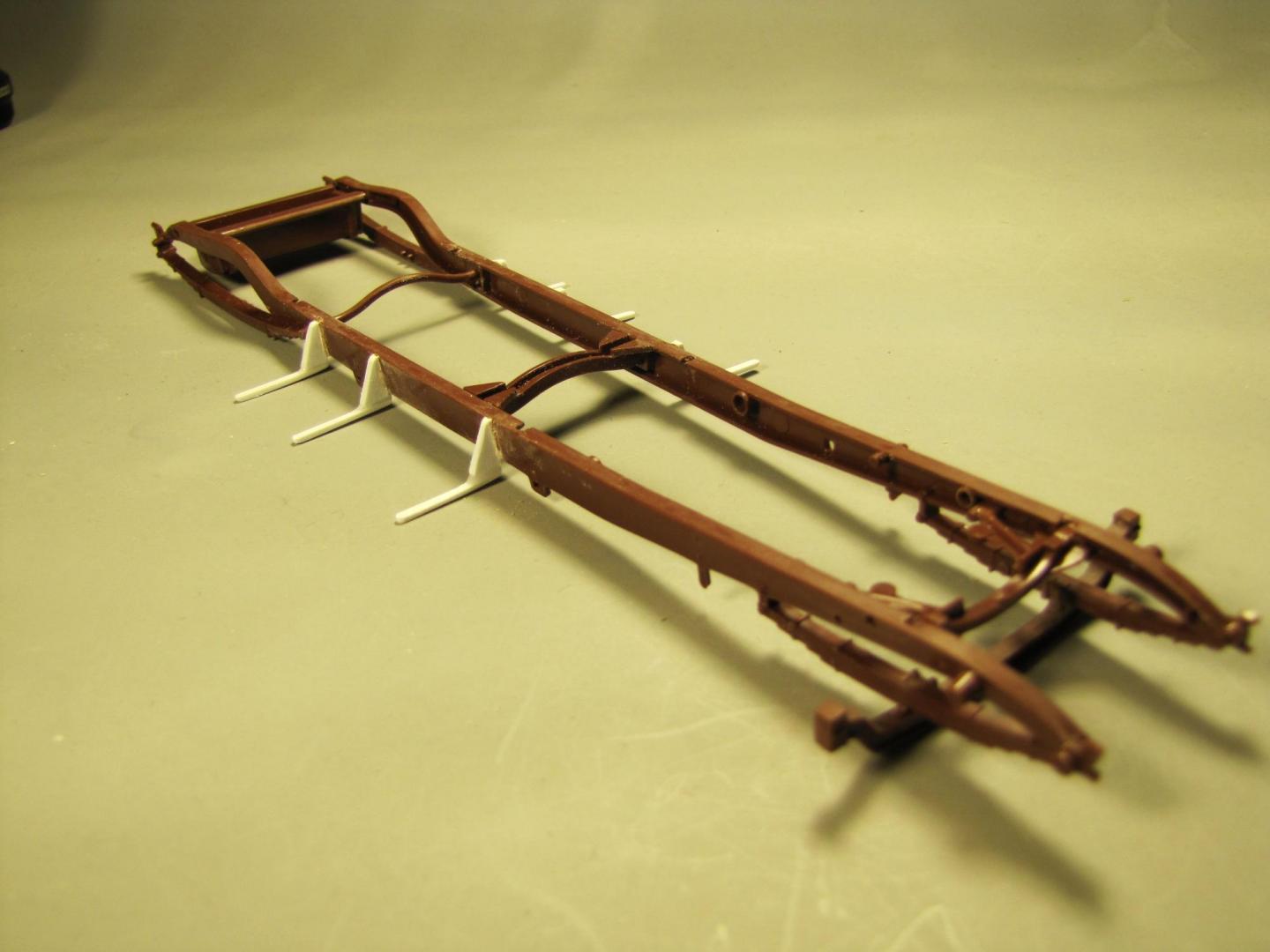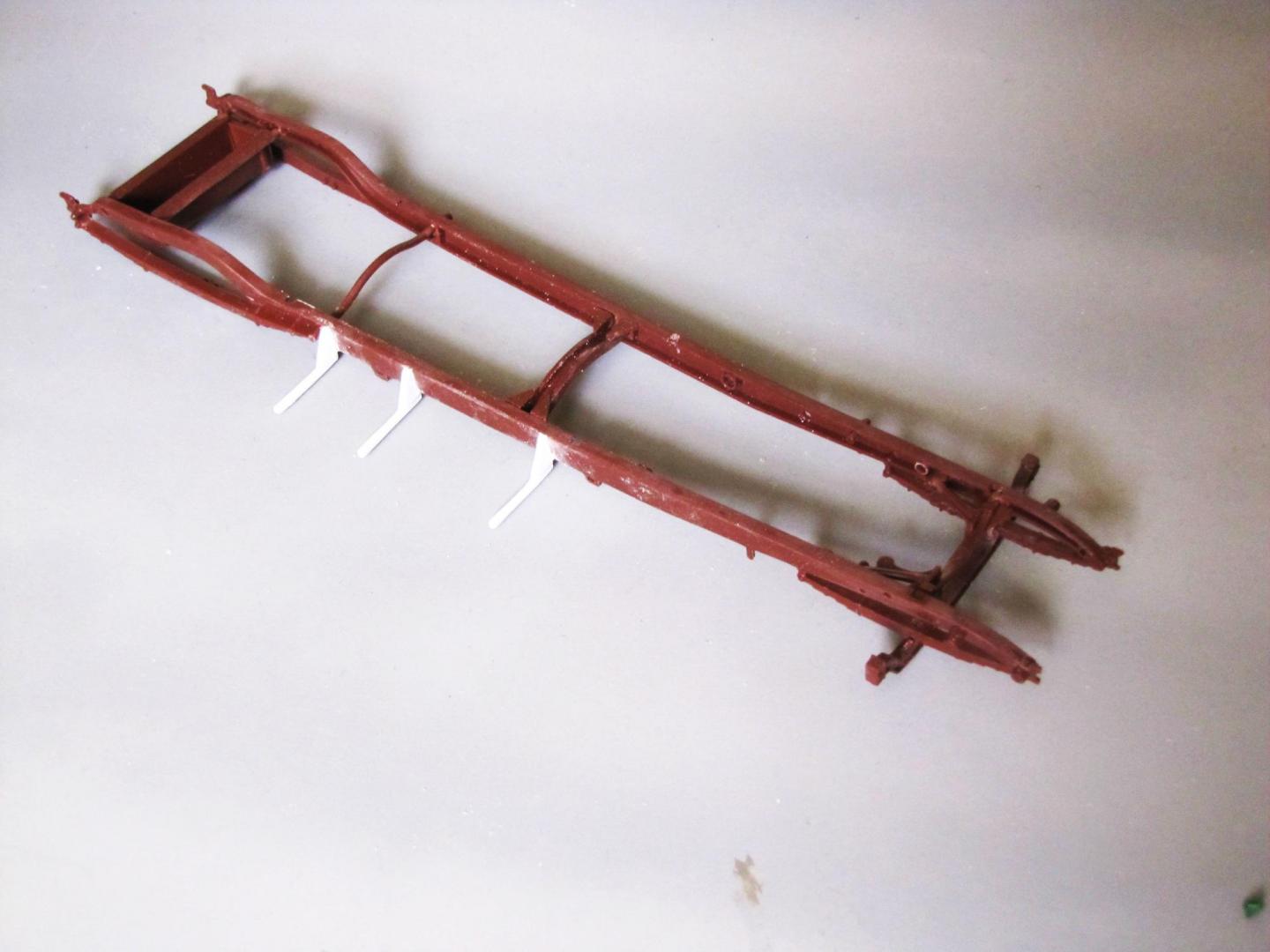
Art Anderson
Members-
Posts
5,052 -
Joined
-
Last visited
Content Type
Profiles
Forums
Events
Gallery
Everything posted by Art Anderson
-
Revell '57 Ford Paxton question
Art Anderson replied to Jantrix's topic in Model Building Questions and Answers
That's the solenoid-actuated lubricator pump. This version Paxton (or McCulloch-take your pick) is an "on demand" supercharger, meaning that its action is controlled by manifold vacuum--and uses a recirculating ball drive system. The lubricator is also controlled by manifold vacuum. Art -
Mythbuster--Red "Bleed"
Art Anderson replied to Snake45's topic in General Automotive Talk (Trucks and Cars)
Except, there are pigments, and then there are dyes. Back many moons ago, plastic feed stock manufacturers had a much larger "bag" of pigments that could be used to color polystyrene--over the years, a good many of those have been prohibited for ordinary consumer products due to their toxicity. I do not recall EVER having a problem with "color bleed through" until perhaps the late 1970's. Art -
Is a 'Sealer' necessary under MCW Paint?
Art Anderson replied to crowe-t's topic in Model Building Questions and Answers
That does make a difference, although I've never experienced color bleed-through, as I airbrush exclusively, and I suppose I've just figured out a technique that doesn't let that happen (seriously, I've never experienced color bleed!) Art -
Is a 'Sealer' necessary under MCW Paint?
Art Anderson replied to crowe-t's topic in Model Building Questions and Answers
Times two! -
Nope, Foyt had to have a couple of tire changes in '64, given that he was driving his old Roadster having solid axles--whole lotta driftin' with one of those. In fact, Clark was just the second driver to finish the Indianapolis 500 on just one set of tires--the other being Bill Cummings in 1931, driving the Cummins Diesel Special--that car ran the entire 500 miles WITHOUT a pit stop!. Art
-
Nobody ever won at Indianapolis on a single set of tires until Clark did it in 1965. Sorry!
-
Running board brackets! This is something that I wish, today, that model companies would do for cars of the 1930's on back--but I do understand that when most such kits were created, model car building was primarily a "kid" thing--and we kids years ago were often turned off by "fiddly" stuff. http://images15.fotki.com/v1631/filesgit/96f8b/4/43743/3168549/hassiswithrunningboardbrackets.jpg Art Leaning on that Testors paint bottle is the original master for casting the final brackets that will be used for several more Duesenbergs!
-
Running board brackets! This is something that I wish, today, that model companies would do for cars of the 1930's on back--but I do understand that when most such kits were created, model car building was primarily a "kid" thing--and we kids years ago were often turned off by "fiddly" stuff. http://images15.fotki.com/v1631/filesgit/96f8b/4/43743/3168549/hassiswithrunningboardbrackets.jpg Art Update: If one looks at any Duesenberg, even any car of the era with "teaspoon" front fenders, the very visible detail is the front fender bracket that steadies not only the sheet metal fender, but the headlights. With that in mind, I determined to make those--they were "hat section" in cross section, curved, of course, to fit the fender contour. So, a bit of work with Evergreen styrene, flat strip along with a thicker strip carved to shape. This is the result! I scratchbuilt a bracket, then made a mold and cast it in urethane resin, actually two of them, and will cast more for future projects!
-
I've got mine right here. It's slated to become a 1942 "Blackout" car (all trim painted instead of brightwork), using a set of Ken Kitchen resin parts that I've had for several years now. Art
-
Luxury in the future?
Art Anderson replied to bbowser's topic in General Automotive Talk (Trucks and Cars)
This is an attempt to re-create Frank Lockhart's Stutz Blackhawk LSR car (he lost his life in 1927, while running for the record at Daytona Beach. Art -
Luxury in the future?
Art Anderson replied to bbowser's topic in General Automotive Talk (Trucks and Cars)
Actually, yes the TASCO was "inventive", given that Gordon Buehrig patented a feature of it that wound up giving him a pretty nice retirement income by the 1970's--the T-Top! -
I get my liquid glue fix at Hobby Lobby--Flexi-File markets a very good liquid cement. Art
-
Actually, I believe that Jim Clark,in 1965, was the first driver to win at Indianapolis on a single set of tires. Art
-
Well, considering that every Indianapolis 500, beginning with 1974, has run with a strict limitation on available fuel (through 1973, fuel was virtually unlimited with cars carrying upwards of 70 gallons on-board), this has become a non-argument frankly.
-
And yet another BMF ?
Art Anderson replied to Jon Haigwood's topic in Model Building Questions and Answers
That sounds quite odd, as I've been using BMF since it first came out back in 1970--never had it affect paint that was completely dry. Are you sure your paint was thoroughly dry, as in "click hard" before foiling? Art -
Back in 1990, I reworked the AMT/Ertl Ecto 1a body into a standard Miller-Meteor ambulance, one of the versions having no rear quarter windows whatsoever. I merely cut sections of the kit glass slightly larger than the corner window openings and then trimmed and filed them to fit those openings very exactly. I simply glued those clear plastic pieces in place in the corner window openings so that they fit as nearly flush with the exterior as possible, then filed them to match the exterior contour. A few swipes of putty, some wet-sanding, and it worked just fine. Art
-
Tool for bending copper/brass tubes/rods
Art Anderson replied to aurfalien's topic in Model Building Questions and Answers
FWIW, unless you really HAVE to have hollow tubing showing at an end (say, an exhaust pipe or dump), why would tubing be necessary? Consider that K&S makes brass rod stock in all but their very largest diameters, and brass rod bends far more easily than does tubing, without the tendency to collapse, or tear apart (larger brass rod will of course, exhibit at least some "fracturing" or "tearing" around the outside of a sharp bend, but that can be dressed down smoothly. I've done a few tubular race car frames back 30-45 yrs ago, in my once-passionate Indy Car building years, and learned to do tubular frames from solid rod stock. The techniques are very much the same save for not needing any special bending tools, the cut ends "fishmouthed" to accept another section of round stock at a right angle for soldering (even fishmouthed at various angles as well). Just a thought here. Art -
Yup! While I have full, unfettered use of both hands and fingers, I have made countless small sanding blocks such as these for years now. Easy to make, inexpensive, and they can do a great job! Art
-
59 Cadallic-Revell: Has anyone built this kit
Art Anderson replied to 69NovaYenko's topic in Car Kit News & Reviews
It was. In fact, that was right at the time that my late friend, Bill Lastovich had left his job as warehouse foreman for Trost Modelcraft & Hobbies (the very first hobby wholesaler on the planet!) to work at Monogram. Bill told me that the '59 Cadillac Eldorado was an experiment, and if it sold, it would mark the end of 1/24 scale at Monogram, save for race cars. The Caddy was highly successful, and Bill's pronouncement proved to be true. Art -
Running board brackets! This is something that I wish, today, that model companies would do for cars of the 1930's on back--but I do understand that when most such kits were created, model car building was primarily a "kid" thing--and we kids years ago were often turned off by "fiddly" stuff. The brackets are two piece, Evergreen styrene. I put together a "mule" fender unit with running boards, which will serve for every Duesenberg I may build with factory fenders, etc. http://images15.fotki.com/v1631/filesgit/96f8b/4/43743/3168549/hassiswithrunningboardbrackets.jpg Art
-
what paint do you use
Art Anderson replied to bubbaman's topic in Model Building Questions and Answers
Frankly, I use whatever paint I have to to achieve the color I want. Over the past now 50 years, I've learned that there just isn't any sort of paint (short of such that are catalyzed, which I have no desire to learn how to use!)that I have been unable to use to achieve the desired result. Art -
Except that the only changes in the tooling were the interior and retooling the scripts on the body--the grille lacks the proper script, and the taillight panel is still that of the Bonneville. Art
-
Correct. The Bill Thomas Cheetah was fairly obscure even in 1965-66, when Cox brought out their slot car kits. They had the reputation of being quite fast on the straightaways, but being front engined cars right at the time of the "rear engine revolution", they were pretty much outclassed on any road course. Of course, the disastrous fire that destroyed the shop where they were built did the car no favors either. Would a model kit of this sell today? Very doubtful--as most race cars of the 1960's are even more obscure today, some 50 years later, at least for the majority of model builders. Art


